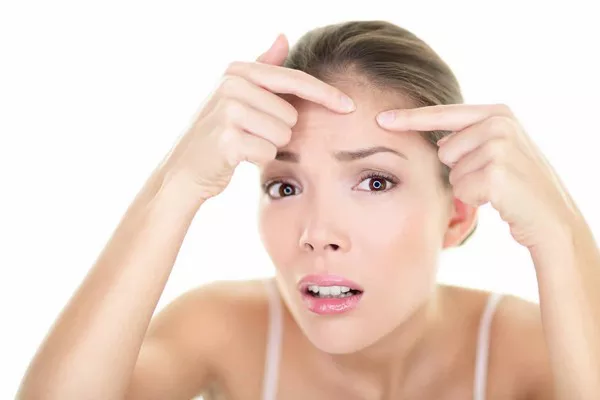Pimple marks, often referred to as post-inflammatory hyperpigmentation (PIH), are a common concern among individuals who have experienced acne breakouts. These marks can linger long after the pimple has healed, leaving behind dark spots or discoloration on the skin. In the quest for clear, blemish-free skin, many turn to various home remedies and skincare products, including petroleum jelly. In this article, we will explore the potential of petroleum jelly in addressing pimple marks, examining its properties, benefits, and limitations in the context of PIH treatment.
Understanding Post-Inflammatory Hyperpigmentation (PIH)
Before delving into the potential of petroleum jelly, it is essential to understand the nature of post-inflammatory hyperpigmentation. PIH occurs when the skin produces excess melanin in response to inflammation or injury. In the case of acne, when a pimple is inflamed, the skin’s natural response can lead to the development of dark spots or patches on the affected area.
PIH is more common in individuals with darker skin tones, as they naturally produce more melanin. It can take weeks or even months for these marks to fade on their own, and in some cases, they may be persistent and require targeted treatment.
Properties of Petroleum Jelly
Petroleum jelly, commonly known by the brand name Vaseline, is a semi-solid mixture of hydrocarbons derived from petroleum. It has been used for decades as a skin protectant and moisturizer due to its occlusive nature, which forms a protective barrier over the skin, reducing water loss and promoting hydration.
Petroleum jelly is inert and does not contain active ingredients, making it safe for most skin types. It is non-comedogenic, meaning it does not clog pores, and is considered hypoallergenic, making it suitable for sensitive skin.
Can Petroleum Jelly Remove Pimple Marks?
While petroleum jelly is an effective moisturizer and can help protect the skin’s barrier, its ability to directly remove pimple marks or hyperpigmentation is limited. Unlike active ingredients found in specific skincare products designed to target PIH, petroleum jelly lacks the components to actively break down melanin or promote skin cell turnover.
Benefits of Vaseline for acne scars
Vaseline, a brand of petroleum jelly, is a widely available and inexpensive product known for its various skin benefits. While it can be beneficial for certain skin conditions, it’s important to note that its effectiveness in treating acne scars is somewhat limited. Here are some potential benefits of using Vaseline for acne scars:
1. Moisturization: Vaseline acts as an occlusive moisturizer, forming a protective barrier on the skin’s surface. This barrier helps to lock in moisture, preventing dryness and keeping the scarred area hydrated. Properly moisturized skin can appear plumper and smoother, reducing the visibility of scars.
2. Wound Healing: Acne scars often result from inflamed and damaged skin during the acne breakout. Vaseline may aid in the healing process of wounds by protecting the damaged area from external irritants and promoting a moist environment that supports tissue repair.
3. Soothing Irritated Skin: Acne scars can sometimes be associated with redness, itchiness, or irritation. The occlusive nature of Vaseline can provide a soothing effect, relieving discomfort and reducing inflammation.
4. Temporary Smoothing Effect: When applied to the skin, Vaseline can create a temporary smoothing effect by filling in fine lines and shallow depressions. This can make acne scars appear less noticeable, but it does not permanently improve the appearance of scars.
5. Sun Protection: Sun exposure can worsen the appearance of acne scars, causing them to darken and become more prominent. Applying a thin layer of Vaseline to the scarred area can act as a barrier against harmful UV rays. However, it’s essential to use a broad-spectrum sunscreen with a high SPF for adequate sun protection.
While Vaseline may offer some benefits for acne scars, it is crucial to understand its limitations. Acne scars vary in type and severity, and what works for one person may not be effective for another. Vaseline does not contain active ingredients specifically targeted at scar reduction, such as retinoids, alpha hydroxy acids (AHAs), or silicone-based scar gels.
Other Treatments to Remove Pimple Marks
For more significant and noticeable acne scars, other treatments may be more effective, such as:
1. Topical Scar Creams and Gels: Look for products containing ingredients like silicone, vitamin E, or onion extract, which have shown some effectiveness in scar reduction.
2. Chemical Peels: AHAs and BHAs in chemical peels can help exfoliate the skin, promoting cell turnover and fading the appearance of scars.
3. Microneedling: This minimally invasive procedure involves using tiny needles to stimulate collagen production and improve the texture of acne scars.
4. Laser Therapy: Certain laser treatments can target pigmented acne scars or stimulate collagen production to improve the overall appearance of the skin.
5. Steroid Injections: For hypertrophic or keloid scars, corticosteroid injections can help flatten and reduce their size.
Conclusion
Petroleum jelly, while an excellent moisturizer and skin protectant, cannot directly remove pimple marks or post-inflammatory hyperpigmentation. However, its role in preventing scarring, soothing inflamed skin, and improving overall skin texture makes it a valuable addition to post-pimple care. To effectively address pimple marks, consider incorporating complementary treatment options, such as sunscreen, vitamin C serums, alpha hydroxy acids, retinoids, and niacinamide.
Remember that every individual’s skin is unique, and what works for one may not work for another. If pimple marks persist or cause significant concern, seeking professional consultation from a dermatologist can provide tailored recommendations for managing and reducing post-inflammatory hyperpigmentation effectively. With patience, consistent care, and targeted treatments, achieving clearer and more even-toned skin is within reach.


